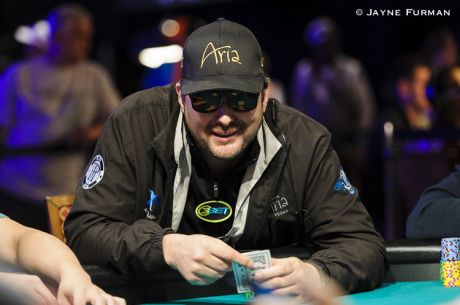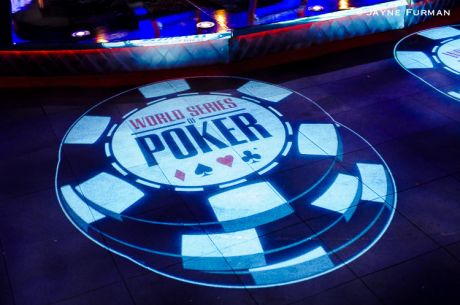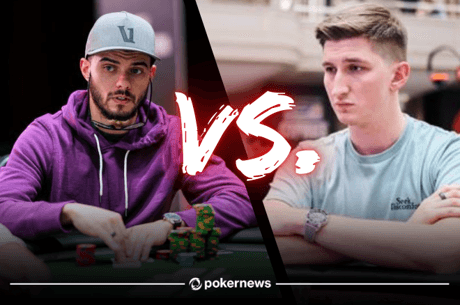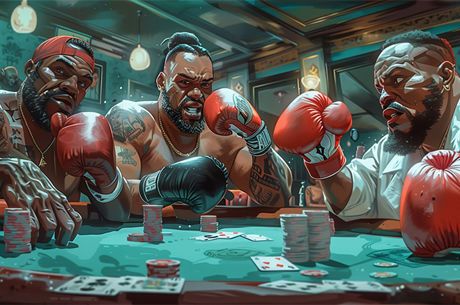Exploiting a Tight Image To Make a Deep WSOP Event Run

The 2015 World Series of Poker is less than a month away, and will kick off as usual with the $500 buy-in Casino Employees No-Limit Hold’em event. Summer before last, I had the opportunity to participate in the Casino Employees event. While I came up short in terms of earning my first bracelet — as it happened, my friend and colleague Chad Holloway took down the tournament — I ended up making a deep run and adding a 12th-place finish to my résumé.
Throughout the course of the tournament, I found myself facing many obstacles of different shapes and sizes. Most notably I spent the majority of Day 1 with a severe short stack. My lack of chips forced me to fold most of my hands for hours and thereby establish a tight image throughout the rest of the day. Ultimately, I was able to exploit that tight image to earn chips late in the day. Hopefully my experience can help to serve as a learning tool if you ever find yourself in a similar situation.
My starting table broke early in the day and I was moved to a table that was in the last section to break, meaning I would be in the same seat the rest of Day 1. After a very swingy first few levels, I found myself relatively short on chips and card dead to boot. For four straight levels I was able to nurse a short stack that fluctuated between 10 and 20 big blinds and thus was able to stay alive in the tournament.
Since I was quite card dead and picking only a few spots occasionally to move my stack in, I had developed a very tight image at the table. I found myself in situations where players actually showed me they were folding respectable hands to my all-in bets before the flop.
Eventually, I weathered the four-hour storm and was able to score more than a double-up in a dream scenario when my QxQx survived against a call from QxJx before the flop. From that point on I hit a small rush of cards where I showed down hands like AxAx and AxKx, which only helped to reinforce my tight image as I had been folding for several hours and then was suddenly tabling nothing but premium hands.
All the while, I had WSOP Circuit grinder Sean Small seated to my direct right. Small, an aggressive player who had not long before that come off a third-place finish at the 2012-13 WSOP Circuit Council Bluffs Main Event for $54,716, had been bullying the table for quite some time and had built up a very large stack.
Knowing Small was an experienced player, I gathered that he most likely had taken note of how tight I played so far. With chips finally in my arsenal, I did everything in my power to exploit this fact.
I began three-betting Small’s late position opens and, as anticipated, most of the time he let go of his cards. Whenever I did so and actually picked up a solid starting hand, I flashed it to him after he folded just to reinforce the image that I was playing very tight. See “Showing Hands to Establish an Image” for more on how occasionally showing a hand like this can have an effect going forward.
I wasn’t always showing Small my hands, though. The times I would three-bet him with a hand like Jx4x, I would keep quiet and muck.
After making a few of these moves and winning small pots before the flop, Small finally called one of my three-bets to 4,700 at 500/1,000/100. In that instance I held Ax10x on the button and the flop came down a gross looking 4♣4♦7♥. I expected Small to check over to me but instead he came out firing with a bet of 3,900. I clicked it right back to 7,800 and Small tank-folded his hand.
While this may seem like a relatively simple hand, it perfectly encapsulates how I was able to understand my perceived image to win the pot and add to my stack.
On that hand, the main question I found myself pondering after Small's flop bet was “Why would he lead into me?” The continuation bet has become a standard play in tournaments and Small should assume that I would lead out most times that he checks to me.
At that point Small had only seen me put a solid amount of chips in the middle with made hands. By firing out into me after my three-bet preflop, he was assuming I would lay down two big cards that missed the flop — hands like AxQx, AxJx, or even my Ax10x — because I would have held a relatively weak hand given the board.
But with the same read on his part, he could also check to me and let me continue out into the pot. His option then would be to come over the top of me with a check-raise. The danger in that, however, is that if I actually did three-bet with a made hand preflop like I had been showing him, I could come right back over the top of him with an all-in bet.
Therefore, Small took the option that would cost him less money to win the pot right there. Coming to this conclusion, I decided to represent an overpair to the board and raise him on the flop. Given my history at the table and with Small in particular, it was easier for him to believe I had a made hand, which prevented him from coming back over the top of me.
I eventually finished the day with 58,300 for an above-average chip stack. I attribute winning a majority of my chips that day to recognizing my rock-like image at the table and taking full advantage of opportunities to exploit it.
Get all the latest PokerNews updates on your social media outlets. Follow us on Twitter and find us on both Facebook and Google+!








